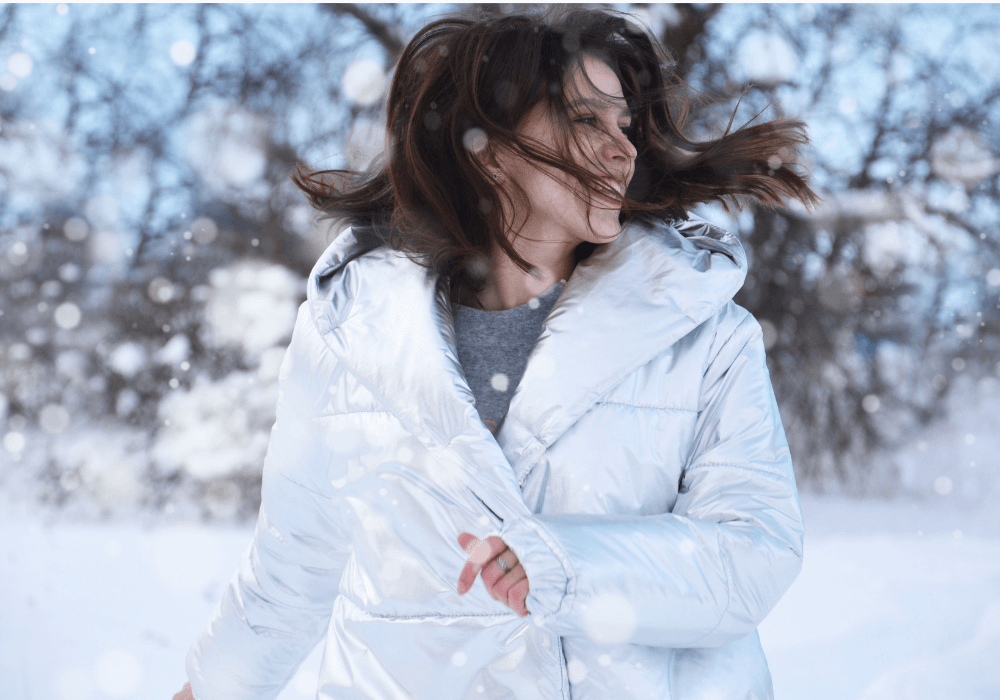For many of us, running is the best way to get our bodies moving during the winter. It's an easy way to get outside and you don't need any fancy equipment or high-tech clothing to do it (though those things certainly don't hurt). But if you're new to running in winter weather, there are some tricks that can help make your experience better. Here are some tips for running in winter.
Start with a brisk walk
The first thing you should do is start with a brisk walk. You want to be sure that your body and muscles are warmed up before you begin running, so take at least five minutes to get moving. Start by walking for a few minutes and then increase your speed until you're jogging or running at a comfortable pace.
Dress in layers
Layers are key to staying warm in winter. The idea is that you'll wear a base layer (like long underwear), then add a mid-layer (like a sweatshirt), and finally an outer layer—a coat, jacket, or parka. As you run, your body will produce heat through the movement of your muscles, which causes sweat to form on your skin.
Once that happens, you want the moisture to evaporate so it doesn't soak into your clothes and make them cold and clammy against your skin. A good base layer will wick away any perspiration from the surface of your body and draw it upward toward the collar where it can evaporate more quickly.
A mid-layer traps warm air between itself and whatever else is on top of it—your base or outer layers—which helps insulate both layers from drying out as quickly as they would otherwise when exposed directly to moisture. This keeps things comfortable for longer because there's less sweating going on.
Leave the cotton at home
While the cotton sweatshirt may look good on your day off, it's not a good choice for winter running. Cotton is slow to dry and will hold moisture, which in turn can lead to some painful chills in colder temperatures. Instead of cotton, opt for synthetic fabrics that wick moisture away from your skin and allow you to stay warm without getting wet or cold. Look for terms like “moisture wicking” or “keep dry” on labels.
Protect your skin from windburn
The sun’s rays are still out and dangerous during the winter, so be sure to wear sunscreen with a high SPF (at least 30). If you're running outside, especially in the snow, make sure your eyes are covered by sunglasses or goggles. Hands should be well-protected with gloves that fit well and offer some sort of insulation (this can mean wearing special ski gloves).
Slow down and take small steps
If you are running in the winter, it's important to slow down and take smaller steps. Slower is better than faster when it comes to running in slippery conditions. If you take small steps, then your foot can find its footing more easily on the ground, which means less slipping and falling for you! This is a good thing.
Be safe about drinking water
When it comes to hydration, there are two key things that you need to keep in mind:
- Drink water before you get thirsty. It's best to hydrate yourself before exercise, rather than waiting until you're already thirsty and then drinking lots of water at once. This can lead to something called hyponatremia (a type of electrolyte imbalance), which can cause nausea and vomiting as well as confusion or even coma if left untreated. To avoid this problem, make sure that you drink plenty of water throughout the day so that your body has enough moisture when exercise begins.
- Replenish what you lose through sweat by drinking enough water between exercise sessions. If possible, try drinking half a liter (about 16 oz) within 30 minutes of finishing an intense workout session. This helps give muscles time to absorb fluids without getting too full from food or other beverages too soon afterward
Have fun running, but be smart about it too!
Running in winter is a great way to get some exercise, but be aware of your surroundings. If you run in the dark, make sure you have lights and reflective gear. It's also important not to run if you are tired or sick. And if there's any chance that running might make an injury worse, it's best to not do it at all!
I hope that these tips help you stay warm and make the most of your winter weather running. If you’re going to be out in icy conditions, please be careful and make sure to wear the right shoes for traction! The last thing we want is for anyone to get injured or hurt by slipping on the ice while out on their run. #HappyFlourishing
